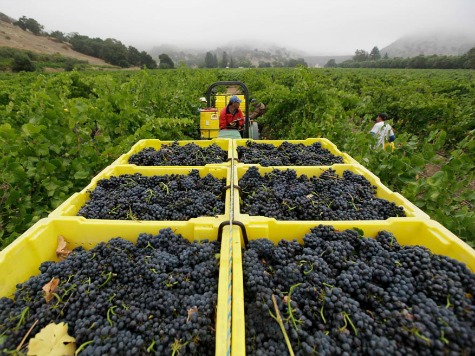Despite the fact that every single part of California is currently facing severe, extreme, or exceptional drought for the first time in 15 years, the UC Davis and ERA Economics research team estimated on May 19 that agricultural losses for California’s Central Valley will only be about $738 million, or 2% of the state’s $42.6 billion in agricultural revenue from the state’s 80,500 farms and ranches this year.
The California drought in the San Joaquin Valley and Tulare Lake basins of the Central Valley are now expected to cause much less severe damage than earlier predictions, according to the UC/ERA report. The report estimates that of seven million acres of Central Valley farmland, only about 410,000 acres, or 7.5%, will be taken out of production.
California suffered its driest year in 2013, and 2014 hasn’t been much better. California droughts are always agricultural issues, since 80% of the state’s freshwater supply is used by farms and ranches. Surface water deliveries from reservoirs and the California Aqueduct to farms and ranches have been cut by 32.5%, or 6 million acre-feet this year.
Massive agricultural losses will be limited this year by the ability to pump groundwater from the state’s underground lakes, known as aquifers. California has over 850 million acre feet of water stored in 450 known groundwater aquifers, enough to cover the state to a depth of 8 feet. The aquifers are a relic of the era when the Pacific Ocean covered much of the state. The largest groundwater aquifer is under much of the state’s Central Valley.
Aquifers fulfill about 40% of the state’s water needs in normal years, but they supply up to 60% during times of intense drought. Water districts in the State of California will spend approximately $450 million this year to pump 5 million acre-feet of groundwater to replace about 80% of surface water losses.
California remains number one in agriculture revenue, with 11.3% of the U.S. total. The state accounts for 15% of national receipts for crops and 7.1% of the US revenue for livestock and livestock products. As the producer of nearly half of all U.S.-grown fruits, nuts and vegetables, California exported $18.18 billion to other states and countries in 2012.
California’s abundance of sun and groundwater explain its productivity, but also explain itscyclical droughts. California’s last drought was a mild one in 2009. That drought resulted in 270,000 acres of farmland taken out of production, and the loss of 7,500 jobs. UC Davis and ERA believe that this year’s drought will cause 50% more land to be taken out of production and 15,000 jobs to be lost. Hopefully for California, a cyclical El Niño that may currently be forming in the Pacific will bring torrential rain next year.

COMMENTS
Please let us know if you're having issues with commenting.